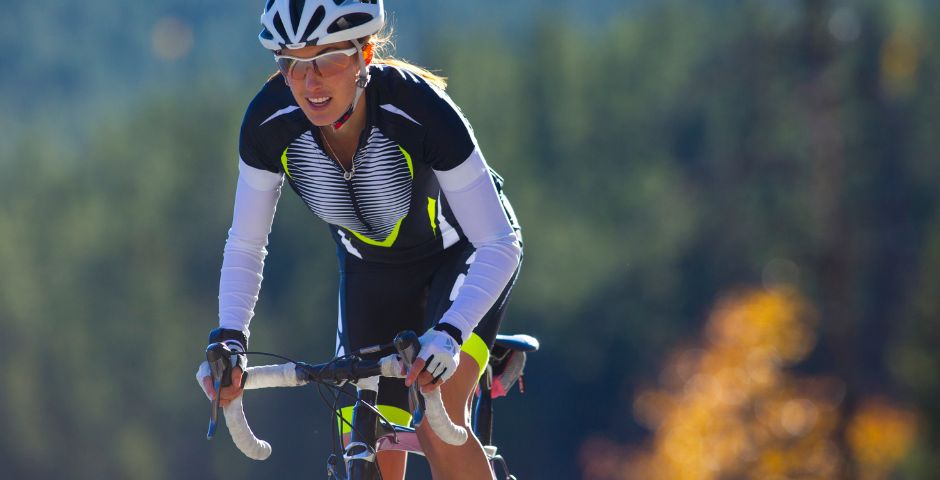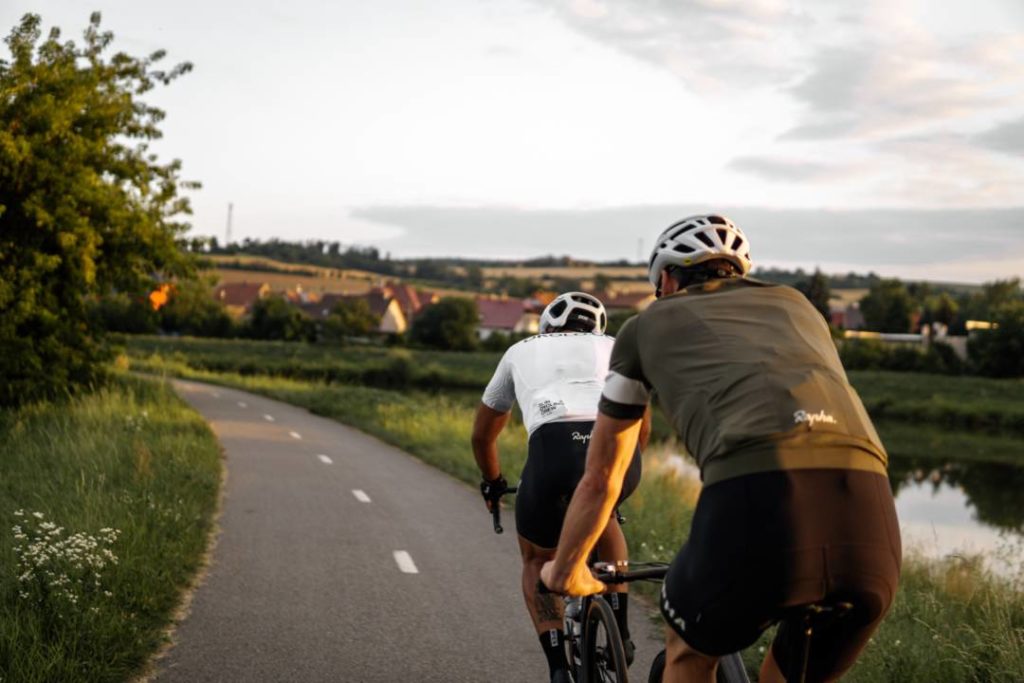The relationship between caffeine and cycling extends beyond a mere coffee break during a long bike ride. This link, rooted in culture and sporting performance, invites a deeper analysis of how this popular stimulant can influence cyclists both positively and negatively.
Here are the benefits of caffeine in cycling
Caffeine is more than just a morning wake-up call. In the context of cycling, it has been shown to significantly improve physical performance. It works by blocking adenosine receptors in the brain, which reduces the perception of effort and allows cyclists to maintain a high pace for longer.
Additionally, it increases the mobilization of free fatty acids, which favours the use of fats as fuel, preserving muscle glycogen for more intense stages of the race or training. A study conducted by Laurent B. J. Deliens and his team in 2015 for the Free University of Brussels (Vrije Universiteit Brussel), titled “Effects of caffeine on exercise capacity and performance in trained and untrained individuals”, supports these benefits by finding that caffeine significantly improves endurance exercise performance in both trained and untrained individuals. This finding highlights the potential of caffeine as an effective ergogenic substance for cyclists looking to optimize their performance.
Caffeine gives a boost in physical performance
The improvement in physical performance thanks to caffeine intake manifests in several ways, one of the most significant being the prolongation of time before reaching fatigue. Caffeine, by interfering with the adenosine signalling mechanism, allows cyclists to experience a lower perception of effort, which translates into the ability to maintain a high intensity for longer periods.
Moreover, it stimulates the central nervous system, resulting in better muscle contraction, thus optimizing the body’s response during cycling. This quality is particularly valuable in competitive scenarios, where maintaining intensity can be decisive for the final outcome.
Further research has shown that caffeine not only benefits the physical aspects of performance but also has a positive impact on the body’s use of energy sources. For example, caffeine increases lipolysis, the process by which free fatty acids are mobilized from adipose tissue to the muscle, where they can be used as fuel. This means that cyclists can conserve their muscle glycogen reserves for critical moments of the race, such as final sprints or demanding climbs. This energy-saving mechanism is a tactical advantage, as it allows athletes to deploy sustained effort for longer, delaying the onset of fatigue and improving overall endurance.

Increased concentration and alertness
The impact of caffeine on increasing concentration and alertness is especially critical in cycling, a sport where quick decision-making and continuous attention to the environment are essential. By stimulating the central nervous system, caffeine significantly improves cyclists’ focus and mental alertness, allowing them to react more quickly to changes in terrain, other competitors’ strategies, and environmental conditions.
This state of heightened vigilance is crucial during long races, where mental fatigue can be as debilitating as physical fatigue. The ability to maintain a high level of concentration can make the difference between staying ahead of the pack or falling behind due to a miscalculation or a delayed response.

When is the ideal time to consume it?
The optimal strategy for consuming caffeine and maximizing its benefits in cycling depends on several factors, including the timing of intake and dosage. The general recommendation suggests that cyclists consume between 3 to 6 milligrams of caffeine per kilogram of body weight approximately 1 to 2 hours before the start of the activity.
This timing allows caffeine to reach its maximum concentration in the blood just when the performance boost is needed. However, it is crucial for cyclists to conduct tests during their training to adjust these recommendations to their individual responses, as caffeine metabolism can vary significantly from one person to another.
Additionally, it’s important to consider the type of activity being undertaken; for example, for short and intense efforts, it might be beneficial to consume closer to the start of the exercise, while for long-duration efforts, a staggered intake or combined with other foods or beverages containing caffeine, can maintain a sustained effect without experiencing peaks and troughs in performance.
Beware: be careful with side effects
Despite the undeniable benefits of caffeine for improving performance in cycling, it’s crucial to approach it with caution due to the potential side effects associated with excessive consumption. These include symptoms such as nervousness, insomnia, increased heart rate, dizziness, and, in more severe cases, cardiac arrhythmias. These effects can not only compromise sporting performance but also the general health of the cyclist.
Caffeine sensitivity varies widely among individuals, meaning a dose that improves performance in one person may cause adverse effects in another. Therefore, it is crucial for each cyclist to identify their own caffeine tolerance through careful experimentation during training, rather than during competitions.
Another aspect to consider is the risk of developing dependence and the potential decrease in caffeine’s effectiveness with continued use. The body can develop tolerance to caffeine, meaning increasingly larger doses are needed to achieve the same ergogenic effect, raising the risk of experiencing side effects.
Some studies suggest that excessive caffeine consumption can lead to mild dehydration, although this is more a topic of debate and seems to depend on individual adaptation to regular caffeine consumption. For these reasons, cyclists should consider periods of “caffeine detox” to reset sensitivity to this substance and maximize its benefits when really needed, ensuring a balance between optimal performance and health.
The café culture in cycling
The café holds a special place in the heart of cycling, woven deeply into its social and ritualistic fabric. Café stops are not just an excuse to rest the legs but crucial moments of camaraderie, exchanging stories and strategies among cyclists.
These breaks, often located in picturesque roadside cafés, become emblematic meeting points where the shared passion for cycling and coffee is celebrated. This ritual reflects a more playful and social aspect of the sport, away from competition and effort, reminding cyclists that, although the pursuit of performance is a key component of cycling, the joy and community found along the way are also essential aspects of this sporting discipline.
BKOOL is the most complete cycling simulator on the market, try it FREE for 7 days!
 Go to BKOOL
Go to BKOOL





